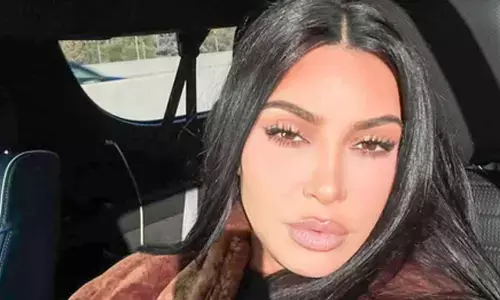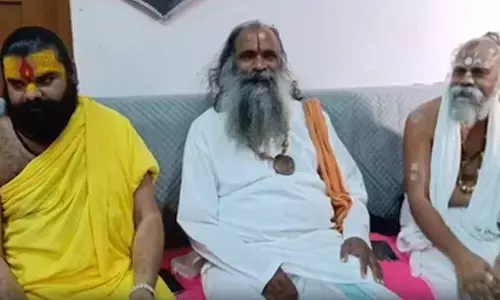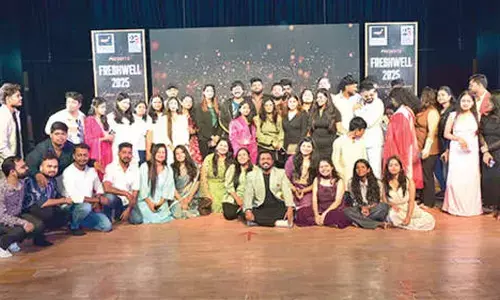Politics of headgear

Politics of Headgear, Uneasy lies the head that wears a crown, said the Bard (Henry IV, Part II) in reference to a king’s responsibilities and constant worries.
Uneasy lies the head that wears a crown, said the Bard (Henry IV, Part II) in reference to a king’s responsibilities and constant worries. The kings were gone; so were their crowns and their kingdoms, but not the insignia that denotes power and authority. Take, for example, the different headgears that adorn community chiefs on ceremonial occasions.

Distinctly different from ordinary caps, hats, helmets, toupees, etc., the simple but elegant and colorful head-covers impose an air of superiority on the wearer. In fact, it is considered an honor when a traditional head outfit is presented to an important person by a community or religious head and if the offer is rejected the gesture is construed as rude and insulting the host.
Now, this is the election season and political leaders have to wear many caps to please the public and to get votes. In the process, they may invite the wrath of fellow leaders or scorn from hardliners and ridicule from their opponents as happened in the case of BJP president Rajnath Singh. It was public knowledge that Rajnath had met Muslim leaders in Lucknow, from where he is contesting for the Lok Sabha, on Monday last. But what was largely unknown to the public was the saffron party leader offering prayers, wearing a traditional Muslim skull cap, at Baba Mir Kasim Shrine in the Uttar Pradesh capital. Was he not photographed, probably using a cell phone, and had it not gone viral on You Tube, his arch enemies in Congress wouldn’t have had a field day disparaging his gesture.
Apparently, the picture was taken when he went to the shrine with which he is reported to have long association to offer prayers after filing his nomination papers in the beginning of this month. The point is not when and where but his wearing a traditional Muslim cap which his party’s prime ministerial candidate Narendra Modi had refused to put on when a Muslim leader offered him in 2011. Interestingly, while Rajnath’s aides described his action as nothing more than honouring the shrine’s custom, Modi was blunt in rebutting the criticism of his not wearing the cap. “While I respect the traditions of others, I live by my own and don’t believe in appeasement for the sake of politics,” he is reported to have said.
On both occasions, BJP stalwarts’ cap actions stirred political storms: while Rajnath was accused of communalising the election (Congress had dubbed party president Sonia Gandhi’s meeting with Shahi Imam of the Delhi Jama Masjid, Maulana Syed Ahmed Bukhari a courtesy call), Modi was described as insensitive to minorities’ religious sentiments. Needless to say, the gestures, wittingly or unwittingly, have become points of intense debate for BJP rivals to analyse the mindset of the saffron party leaders and halt their ascendancy in popularity polls. It is not uncommon for national political leaders to appear in various avatars when they visit different regions for campaigning. The most eye-catching and colourful are North-Eastern costumes with headgears of diverse shapes. Modi, hopping from one meeting to another in the hilly and tribal regions of North-East, must have pleased the crowds wearing the local dress and a matching a headgear. Delightful, indeed. But could he be able to pull a surprise out of the hat? Sonia Gandhi, not to be outwitted by her bête noire, adds a dash of colour to her campaign by giving herself a local flavor during her campaign trail.
South, comparatively, has little to offer except in the tribal areas where many political leaders fear to tread. Nevertheless, the Southern states have many spices to add to campaigns of different parties. Leaders can ride bullock carts, drive tractors and try their hands on farm machinery to declare their solidarity with and support to farmers. Leaders can even appear in farmers’ attire for a good photo op. Other endearing acts include carrying infants in arms, kissing children and extending arms in blessing gestures.
It is symbolism that carries the occasion and steals the show, underlining the fact, however superficial it may be, that the leader is with the masses. Or, is he/she the leader of the masses? Whatever the exercise may be, it is to identify and connect self with the masses. Donning local dress and daubing with party colours do attract attention; but can they fool the public?
If the campaigners match their showmanship with doable promises and workable people-oriented schemes, it carries weight. Otherwise, the clownish appearances remain part of campaign buffoonery.



















